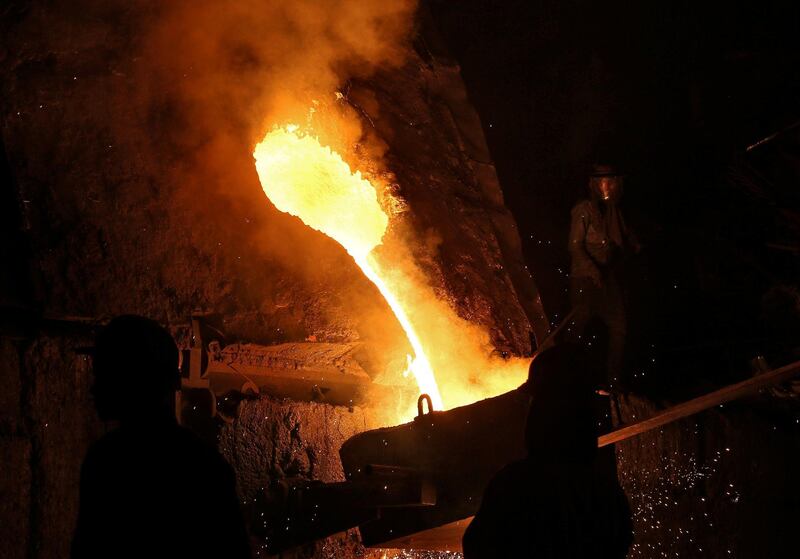Eurozone industrial output posted in November its biggest fall in nearly three years, data showed on Monday, stoking concerns about the currency bloc's economic growth in the final quarter of 2018 and casting doubt over the timing of the next rate hike.
The European Union's statistics office Eurostat estimated that industrial production in the 19-nation euro zone tumbled by 1.7 per cent in November month-on-month, its worst reading since February 2016, after a modest, downwardly revised 0.1 per cent rise in October. Economists polled by Reuters had expected a drop but smaller than official estimates show. Markets expectations were for a 1.5 per cent monthly drop and a 2.3 per cent fall year-on-year.
The poor output data increased pessimism about the bloc's growth, which seems now more likely to have remained slow in the last three months of last year.
"The eurozone has clearly shifted down a gear," said Andrew Kenningham, an economist at research firm Capital Economics.
He said the bloc could still eke out a small increase in its gross domestic product in the last quarter, but the new output figures sent a negative signal.
_______________
Read more:
Factory output slows in Europa and Asia
Eight investment trends to look out for in 2019
_______________
The eurozone's economy grew by only 0.2 per cent in the third quarter, down from growth of 0.4 per cent in the second quarter. Hopes of a rebound are now receding.
Despite better than expected retail trade data in November that showed consumers are still willing to spend, a gloomier mood among investors is likely to affect investment.
The output reading fell mostly because of a large drop in the production of capital goods, such as machinery.
Slower growth in the last quarter could force the European Central Bank to review its forecast of a 1.7 per cent GDP rise for all-2018.
Low growth and an easing of the inflation rate in December from the ECB's target make a rate hike this year less likely, ING economist Bert Colijn said.
The ECB promised in December to keep rates at current record lows at least until the summer and also made no attempt to change market expectations that a first post-crisis interest rate rise will come only in early 2020.
The weak eurozone output data followed negative readings in the bloc's main economies published in recent days, which prompted economists to raise the risks of recession in Germany and Italy.
Germany, the largest economy in the eurozone, saw its industrial output fall by 1.9 per cent in November on the month against earlier forecasts of a 0.3 per cent rise, data released last week showed.
Production also fell markedly and by more than predicted in France and Italy, the second and third biggest economies in the bloc, national statistics offices said last week .
At euro zone level, the fall was mostly caused by the large monthly 2.3 per cent drop in the production of capital goods and by a 1.7 per cent fall in the output of durable consumer goods such as fridges.






